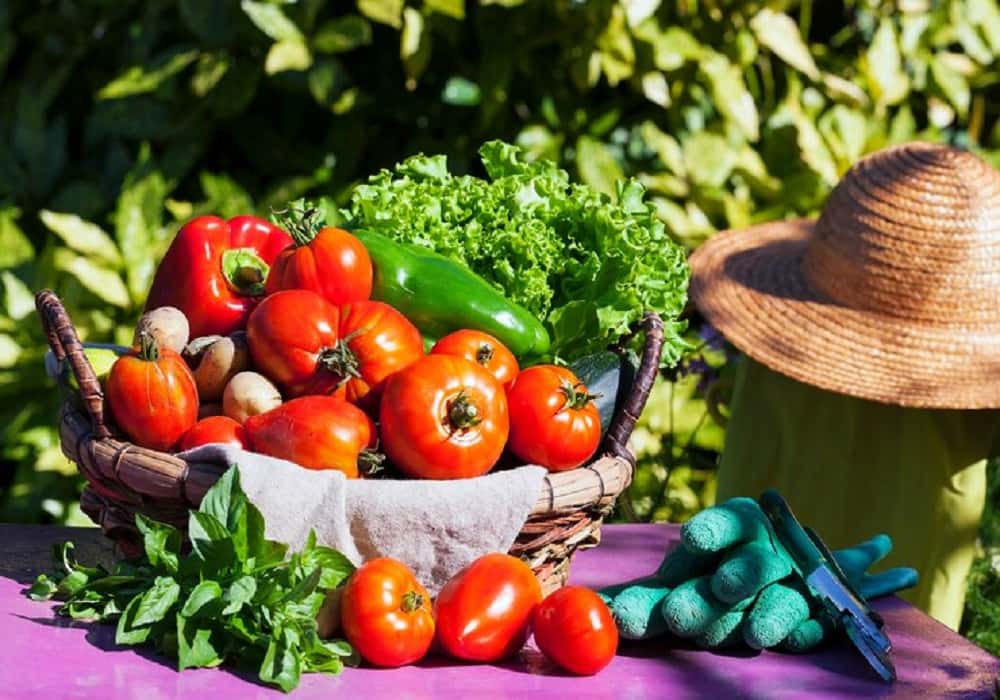Best Vegetable Garden Plants for Every Season
Growing vegetables is a fulfilling hobby that delivers healing benefits in addition to fresh product. Knowing which vegetable garden plants to grow each season is essential to a great harvest, regardless of gardening experience. With the guidance of this guide, you can make sure your garden is fruitful all year round by selecting the ideal plants for each season.
Spring Vegetable Garden Plants
Spring is a season of renewal and growth, making it an ideal time to start planting cool-season crops. These vegetable garden plants thrive in the mild temperatures of spring and are often some of the first vegetables to be harvested.
- Lettuce: A quick-growing vegetable, lettuce is perfect for early spring planting. It comes in various varieties, including romaine, butterhead, and leaf lettuce. Lettuce prefers cooler temperatures and can be harvested within a few weeks.
- Spinach: Another cool-season crop, spinach is rich in nutrients and grows rapidly. It can be planted as soon as the soil can be worked in spring. Young spinach leaves can be picked for salads, or they can be left to ripen for cooking.
- Radishes: Radishes are one of the fastest-growing vegetable garden plants, making them perfect for impatient gardeners. They thrive in cooler weather and can be harvested in as little as three weeks.
- Peas: Peas, whether snap, snow, or garden peas, are excellent spring vegetables. They prefer the cool temperatures of spring and can be harvested as soon as the pods are full.
- Carrots: While carrots can be grown year-round, they are particularly sweet when grown in the cooler months. They take longer to mature but are worth the wait for their crisp, sweet flavor.
Summer Vegetable Garden Plants
Summer is the peak growing season, offering warm temperatures and long days. This season is perfect for heat-loving plants that produce abundant harvests.
- Tomatoes: A favorite among gardeners, tomatoes thrive in the warm summer months. They come in various types, including cherry, beefsteak, and heirloom, each offering unique flavors and uses. Tomatoes require full sun and consistent watering.
- Cucumbers: These fast-growing vegetable garden plants love the heat and can be grown on trellises to save space. Cucumbers are versatile and can be used fresh in salads or pickled for later use.
- Zucchini: Zucchini is a prolific vegetable that can produce an abundance of fruit throughout the summer. They are easy to grow and can be used in various dishes, from stir-fries to baked goods.
- Bell Peppers: These colorful vegetables add flavor and nutrition to any dish. For optimal growth, bell peppers need warm soil and lots of sunlight. They are available in a variety of hues, such as orange, yellow, red, and green.
- Eggplant: Eggplants are another heat-loving plant that thrives in summer. They need lots of sun and a lengthy growing season. Asian and Italian cuisines alike can make use of eggplants.
Fall Vegetable Garden Plants
As the temperatures begin to cool, it’s time to transition to fall crops. These plants can withstand cooler temperatures and often taste sweeter after the first frost.
- Broccoli: A cool-season vegetable, broccoli grows best in the fall. To get big heads, it needs full sun and constant moisture. When broccoli heads are tight and solid, they are ready to be harvested.
- Cauliflower: Like broccoli, cauliflower is a cool-season crop that thrives in the fall. It requires consistent watering and rich soil. When cauliflower heads are compact and firm, they are ready to be picked.
- Brussels Sprouts: Brussels sprouts are a unique vegetable that develops best in cool weather. Their flavor is enhanced by a long growing season and harvesting that occurs after the first frost.
- Kale: A resilient green that can tolerate lower temperatures is kale. It’s rich in nutrients and can be harvested as baby greens or allowed to mature. Kale can be used in salads, soups, or as a cooked green.
- Beets: Beets are a versatile root vegetable that grows well in the fall. The leaves and roots are tasty and nutrient-dense. Beets can be harvested when they are small and tender or allowed to grow larger.
Winter Vegetable Garden Plants
In mild climates or with the use of protective covers, some vegetables can be grown even in winter. These hardy vegetable garden plants can tolerate frost and continue to produce throughout the cold months.
- Garlic: Garlic is typically planted in the fall and harvested the following summer. It requires a long growing season and cold temperatures to develop properly. Garlic is a flavorful addition to many dishes.
- Onions: Onions are a versatile vegetable that can be planted in the fall for a spring harvest. They come in various varieties, including sweet, red, and white onions. Onions are essential in many recipes.
- Leeks: With a mild, onion-like flavor and a long growth season that requires constant moisture, leeks are a resilient vegetable that can endure freezing temperatures.
- Spinach: Spinach can also be grown in winter with protection. It is cold-hardy and can continue to produce leaves even in cold weather. Spinach is versatile and can be used fresh or cooked.
- Swiss Chard: Swiss chard is a resilient green that can tolerate cold temperatures. It produces vibrant, colorful stems and dark green leaves. Swiss chard is a versatile ingredient in many recipes.
Growing vegetable garden plants year-round is possible with the right planning and selection of crops. By choosing the appropriate plants for each season, you can enjoy a continuous harvest of fresh, homegrown vegetables. Remember to consider your local climate and growing conditions when selecting plants for your garden. Happy gardening!






